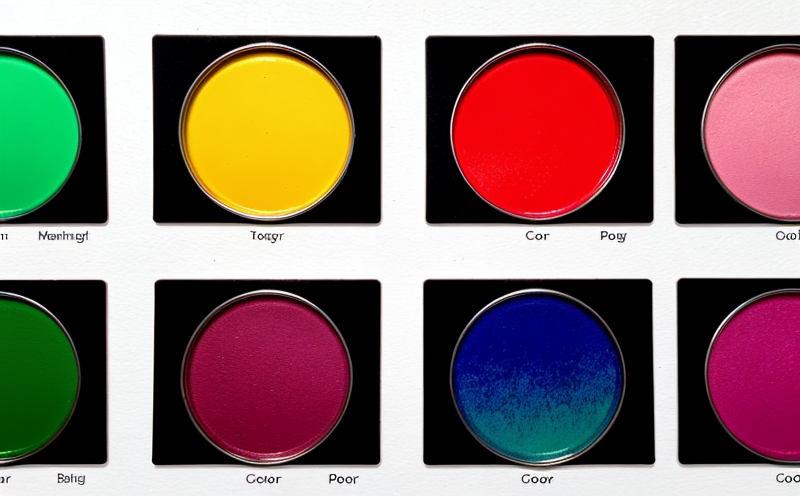ASTM G173 Solar Spectrum Reference Testing of Outdoor Lighting Materials
The ASTM G173 standard is an essential tool for quality managers, compliance officers, R&D engineers, and procurement professionals involved with outdoor lighting materials. This testing ensures that the color and spectrum of light emitted by outdoor luminaires are consistent across different environments and conditions. By adhering to this standard, manufacturers can guarantee their products meet global regulatory requirements and satisfy customer expectations.
The ASTM G173 test evaluates the solar spectral irradiance incident on a specimen placed in a controlled environment. This process involves simulating various outdoor lighting conditions using specific wavelengths of light that closely mimic natural sunlight. The testing is particularly critical for materials intended to be used outdoors, such as road signs, traffic signals, and architectural glass.
The standard helps to ensure color constancy across different environments by providing a consistent reference spectrum. This consistency is vital in applications where the appearance of outdoor lighting materials can significantly influence human perception and safety. For instance, traffic signs must be easily visible under various weather conditions, including fog, rain, or snow.
The ASTM G173 test is not only about compliance but also about enhancing product performance. By ensuring that a material's color remains consistent across different environments, manufacturers can improve the reliability and longevity of their products. This consistency helps reduce maintenance costs and ensures customer satisfaction by delivering products that meet or exceed expectations.
The testing process involves several steps to ensure accuracy and repeatability. The specimen is exposed to controlled light sources that simulate sunlight, and its color performance is measured using a spectrophotometer. The results are compared against the ASTM G173 reference spectrum to determine compliance. This method ensures that any deviations from the expected spectral irradiance can be identified and addressed.
The importance of this testing cannot be overstated, especially in sectors like transportation and architecture. In the transportation sector, for example, consistent color perception is crucial for safety. Drivers must be able to quickly identify traffic signs under varying conditions. Similarly, in architectural design, materials with consistent color performance can enhance the aesthetic appeal and functionality of buildings.
The ASTM G173 test also plays a role in environmental and sustainability efforts. By ensuring that outdoor lighting materials maintain their appearance over time, manufacturers can contribute to longer-lasting products that require less maintenance. This reduces waste and the overall environmental impact of manufacturing processes. Additionally, consistent color performance across different environments helps reduce energy consumption by optimizing light output.
Industry Applications
- Traffic Signage: Ensuring that traffic signs remain visible under various weather conditions is critical for road safety.
- Architectural Glass: Consistent color performance in architectural glass can enhance the aesthetic appeal of buildings while maintaining functionality.
- Signage & Lighting Devices: This testing ensures that signage and lighting devices remain effective under varying environmental conditions.
- Outdoor Furniture: Maintaining consistent color over time is important for outdoor furniture to ensure durability and aesthetic appeal.
Environmental and Sustainability Contributions
- Reduces Maintenance Costs: By ensuring that materials maintain their appearance, the need for frequent replacement decreases, leading to cost savings.
- Promotes Consistent Performance: Consistent color performance across different environments enhances product reliability and longevity.
Why It Matters
The ASTM G173 Solar Spectrum Reference Testing of Outdoor Lighting Materials is crucial for ensuring that lighting products maintain their intended appearance and performance under various environmental conditions. This testing is particularly important in outdoor environments where exposure to sunlight can cause color shifts or degradation over time.
By adhering to this standard, manufacturers can ensure that their products meet global regulatory requirements and satisfy customer expectations. The test helps to guarantee color constancy across different environments, which is essential for applications such as traffic signs, architectural glass, signage, and outdoor furniture.
The importance of consistent color performance cannot be overstated in sectors like transportation and architecture. In the transportation sector, for example, consistent color perception is crucial for safety. Drivers must be able to quickly identify traffic signs under varying conditions. Similarly, in architectural design, materials with consistent color performance can enhance the aesthetic appeal and functionality of buildings.
The ASTM G173 test also plays a role in environmental and sustainability efforts. By ensuring that outdoor lighting materials maintain their appearance over time, manufacturers can contribute to longer-lasting products that require less maintenance. This reduces waste and the overall environmental impact of manufacturing processes.





